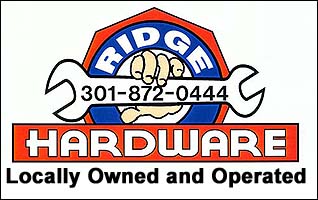Commentary by Sara Kaplaniak
Who doesn’t feel calmer when looking at a fish tank? That’s why they are a common fixture in doctor’s offices. Multiply those Zen feelings by hundreds when taking in a river or lake. You can’t help but think that fish live a peaceful life in their aquatic environments, free of the woes shouldered by humans.
Or do they?
According to emerging scientific evidence, we’re treating fish and other wildlife for all kinds of human conditions via prescription medicines and other products we consume and flush down the toilet or dispose of improperly. Once traces of these products – antibiotics, anti-depressants, cholesterol medicines, pain killers, birth control pills, fragrances, cosmetics, sunscreens (to name a few) – reach local waterways, they become ingested by unwilling consumers simply riding the currents looking for their next meal.
One might think that most of these products would be caught by wastewater treatment plants. However, they are only partly removed by conventional treatments, resulting in their discharge to streams and rivers. They also seep into groundwater from landfills.
Scientists suspect this shower of chemicals is why U.S. Geological Survey (USGS) scientists have discovered large percentages of male fish with female traits in the Susquehanna, Potomac rivers, and other tributaries to the Chesapeake Bay. In the last year, more than 90 percent of adult male bass examined in the Susquehanna displayed immature egg cells.
It’s an issue that has become so prominent that it has been given its own research category by the U.S. Environmental Protection Agency (EPA), which refers to the chemical culprits as “Pharmaceuticals and Personal Care Products (PPCP),” or more specifically, bioactive compounds having an effect on living tissue. Falling into this category are the trace amounts of more than 100 different human and veterinary medicines that have been detected in 80 percent of U.S. streams and nearly a quarter of the nation’s groundwater sampled by the USGS. In the Chesapeake Bay, National Oceanic and Atmospheric Administration scientists and research partners detected at least 13 of these pharmaceuticals in water samples.
While concentrations of these compounds in the environment are low – far below the levels of a medical dose – the combination of a variety of pharmaceuticals, over-the-counter medications and other personal care products in local waters could prove toxicologically significant over the long term. They may also interact with other pollutants, such as pesticides, in unanticipated ways. Even though a lot is unknown, surely common sense tells us that we don’t need to send so many of these products to fish, wildlife and other humans living downstream.
So what can a person do while scientists at places like the EPA, USGS and NOAA step up efforts to measure emerging contaminants, detect their presence in water supplies and improve water treatment methods? First of all, don’t stop taking your medicine!
You can, however, look at ingredients for the lotions and potions used for smoother skin and shinier hair and consider whether they might be safe for the wildlife unwillingly using them after the products go down the drain. When possible, consider natural approaches to personal care. I’m talking oatmeal for itches, cucumbers for puffy eyes, olive oil and sugar for rough feet, and peppermint for a stuffy nose. Keeping water in its natural state as much as possible can only benefit people and wildlife.
For prescription and over-the-counter medications, mark your calendar to participate in the second National Prescription Drug Take Back Day on April 30th, an event organized by the U.S. Department of Justice’s Drug Enforcement Administration in conjunction with state and local law enforcement agencies. The event focuses on public safety, preventing dangerous drugs from getting into the hands of the wrong people and an increasing problem of pharmaceutical controlled substance abuse. The event also provides the additional benefit of helping to maintain cleaner water and a healthier environment for people and wildlife by ensuring the safe disposal of medications as an alternative to flushing them down the toilet or pouring them down the drain.
You can find a location near at the DEA’s website: http://www.justice.gov/dea/.
The first National Prescription Drug Take Back Day, held last September, included approximately 3,000 state and local law enforcement agencies throughout the nation that together collected an impressive 121 tons of unwanted and unused medications. This year’s event, which includes locations around the Chesapeake Bay and Potomac and Susquehanna river basins, promises to continue along the same vein. With less prescription drugs in medicine cabinets, some of them harmful and addictive, the streets will become a little safer. As an extra benefit, the waters will became a little safer too.
Sara Kaplaniak lives and writes in Pennsylvania, where she reduces, reuses and recycles along with her husband and two kids. Distributed by Bay Journal News Service.


